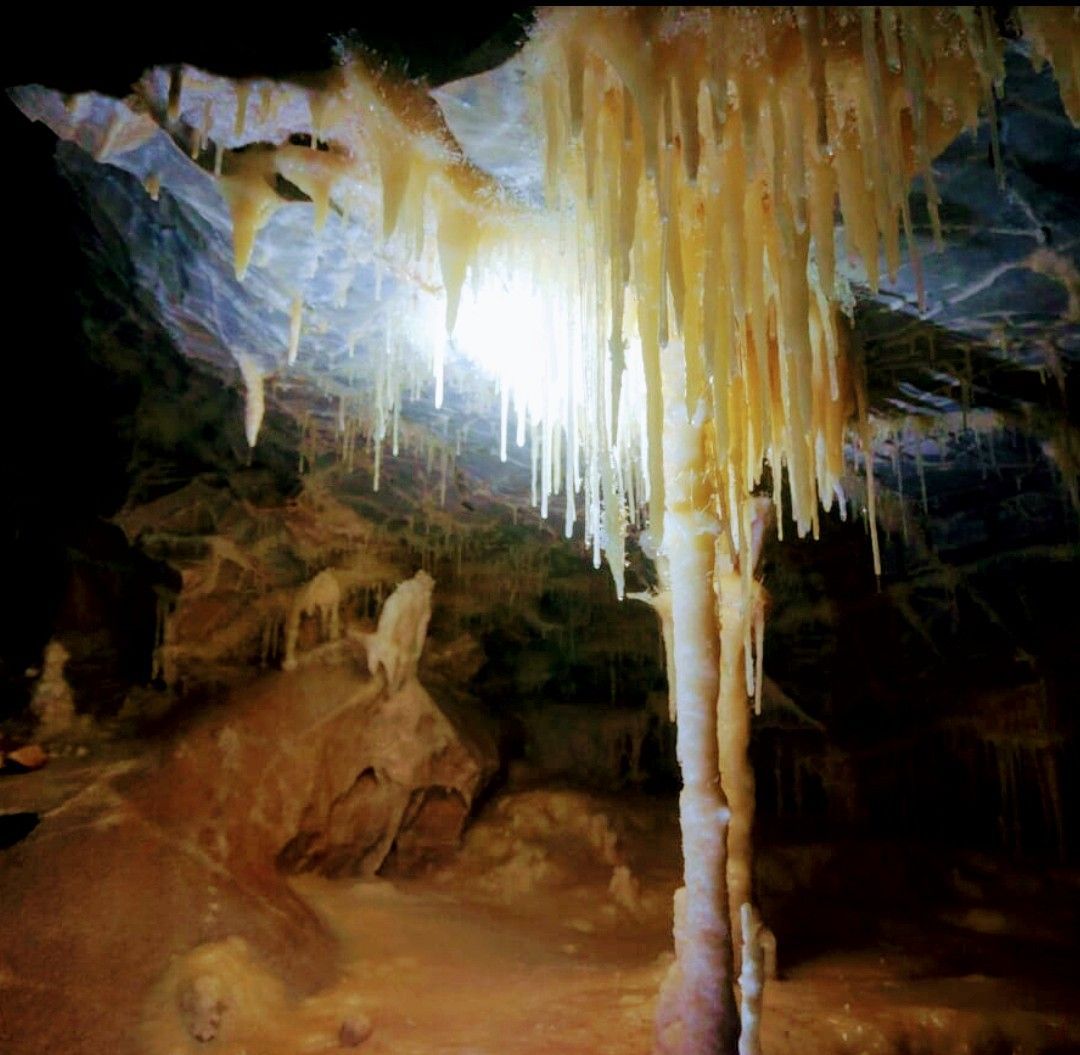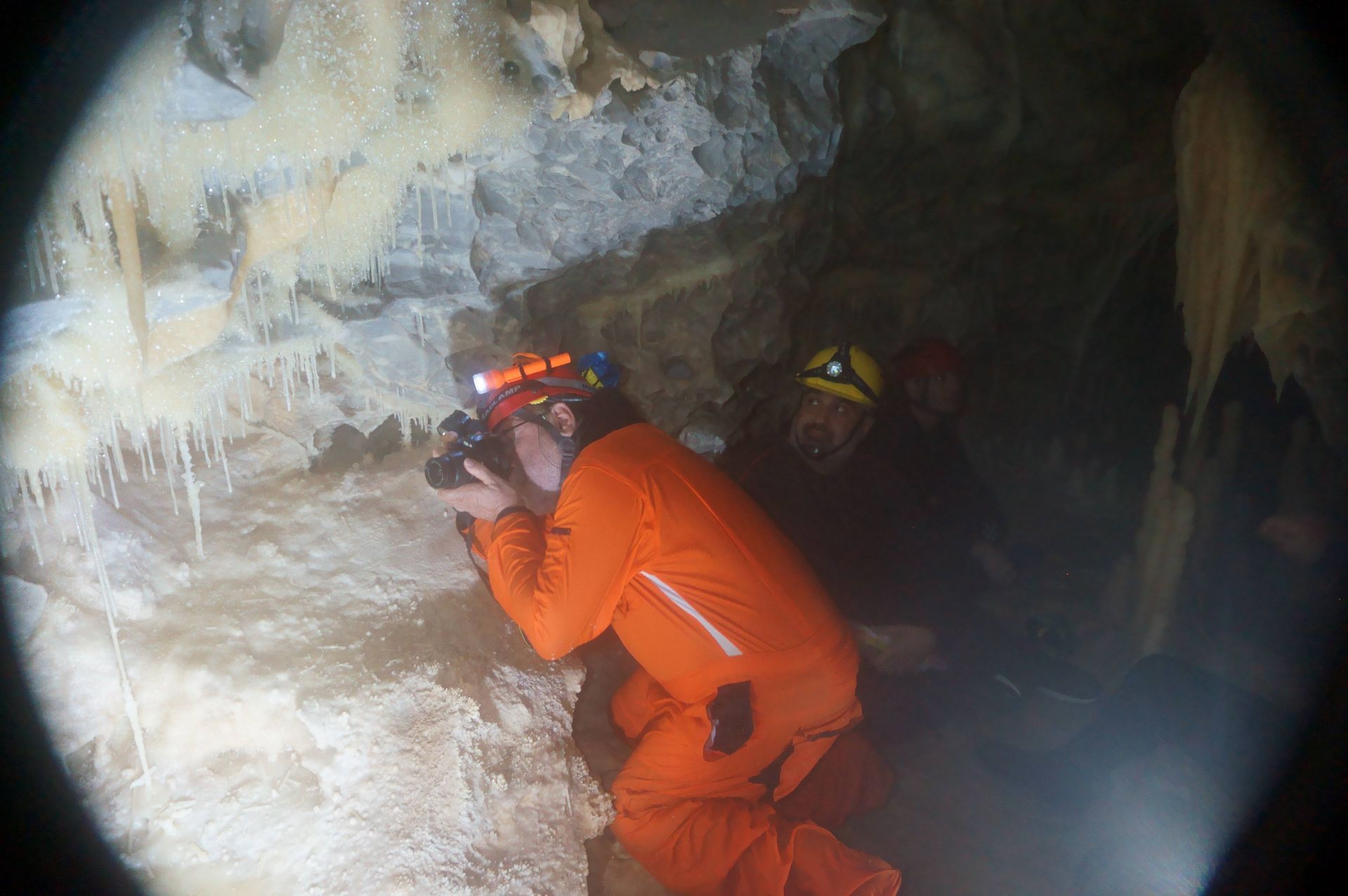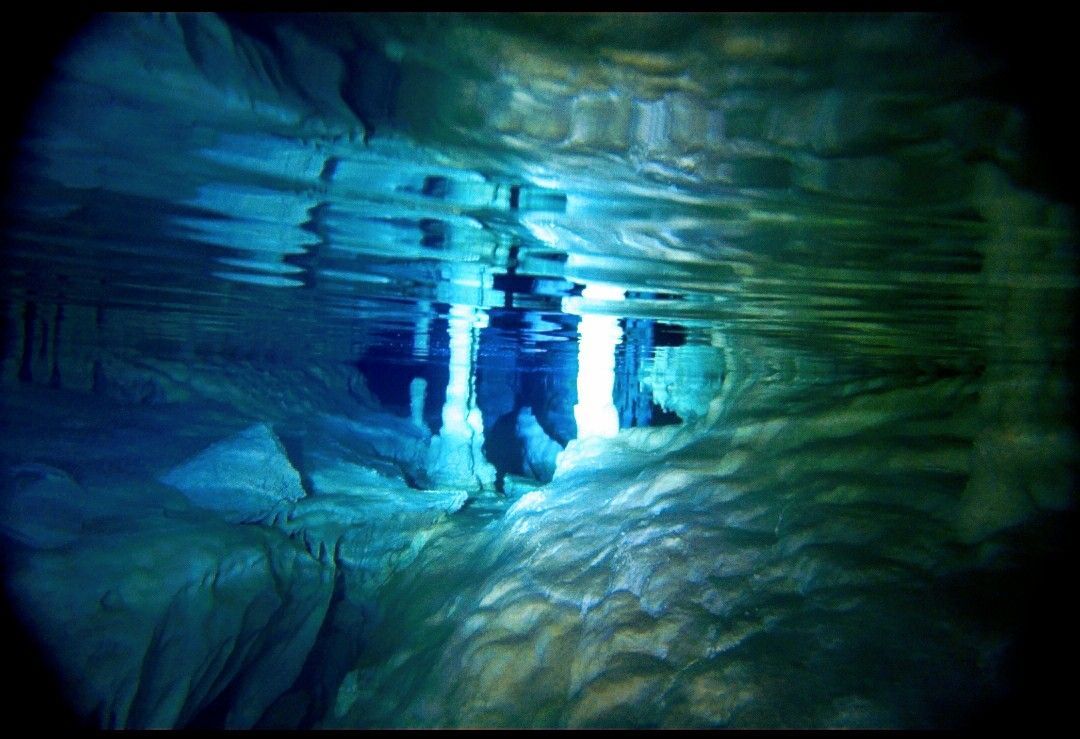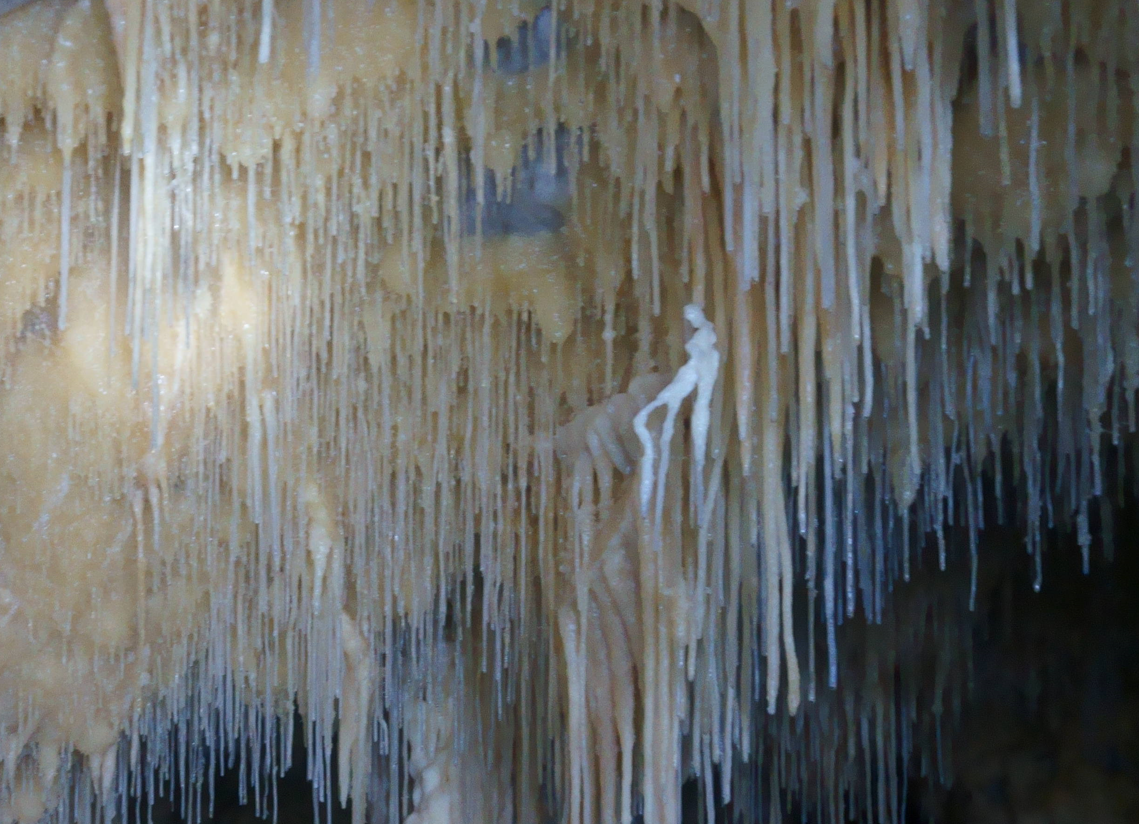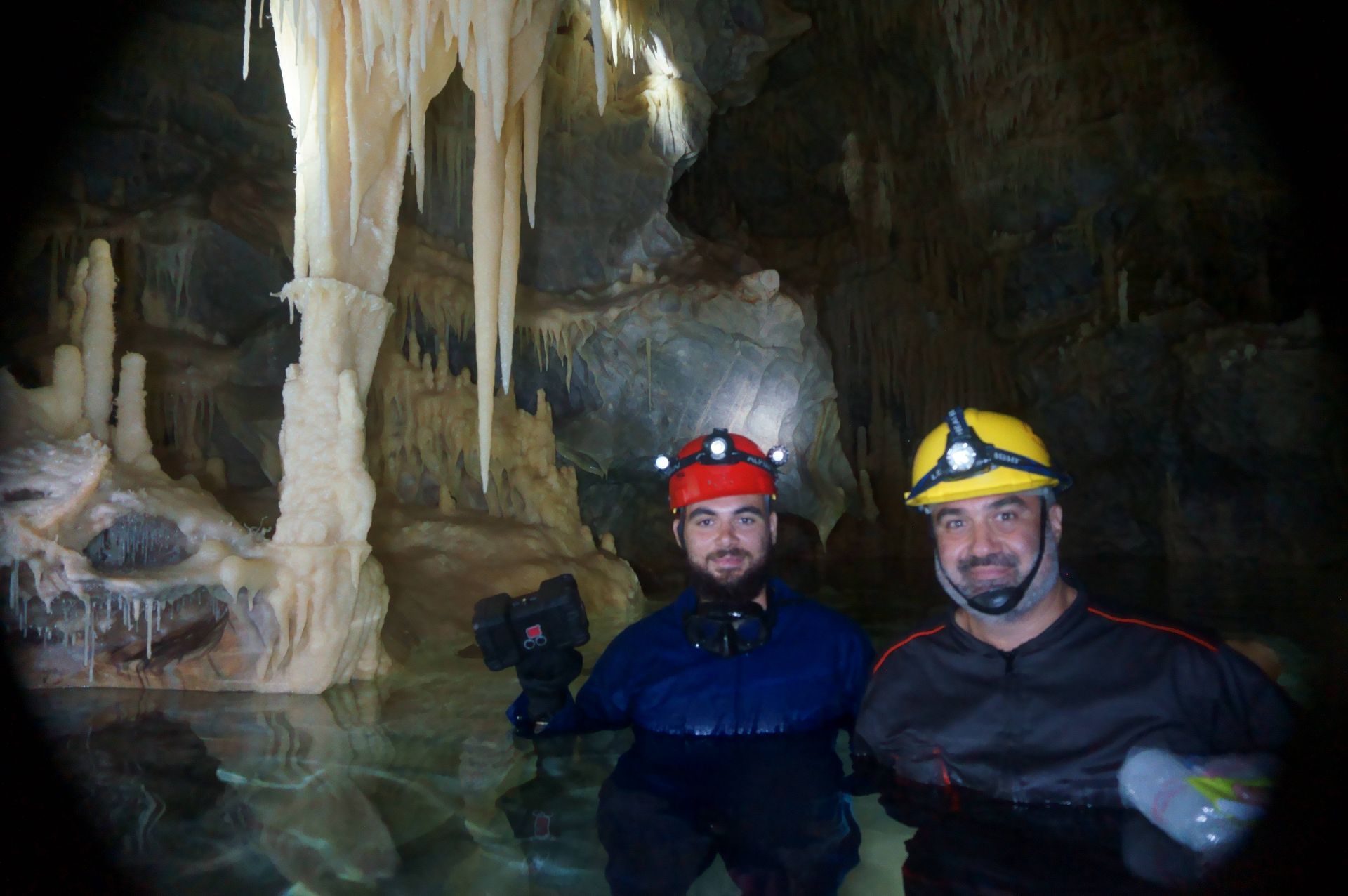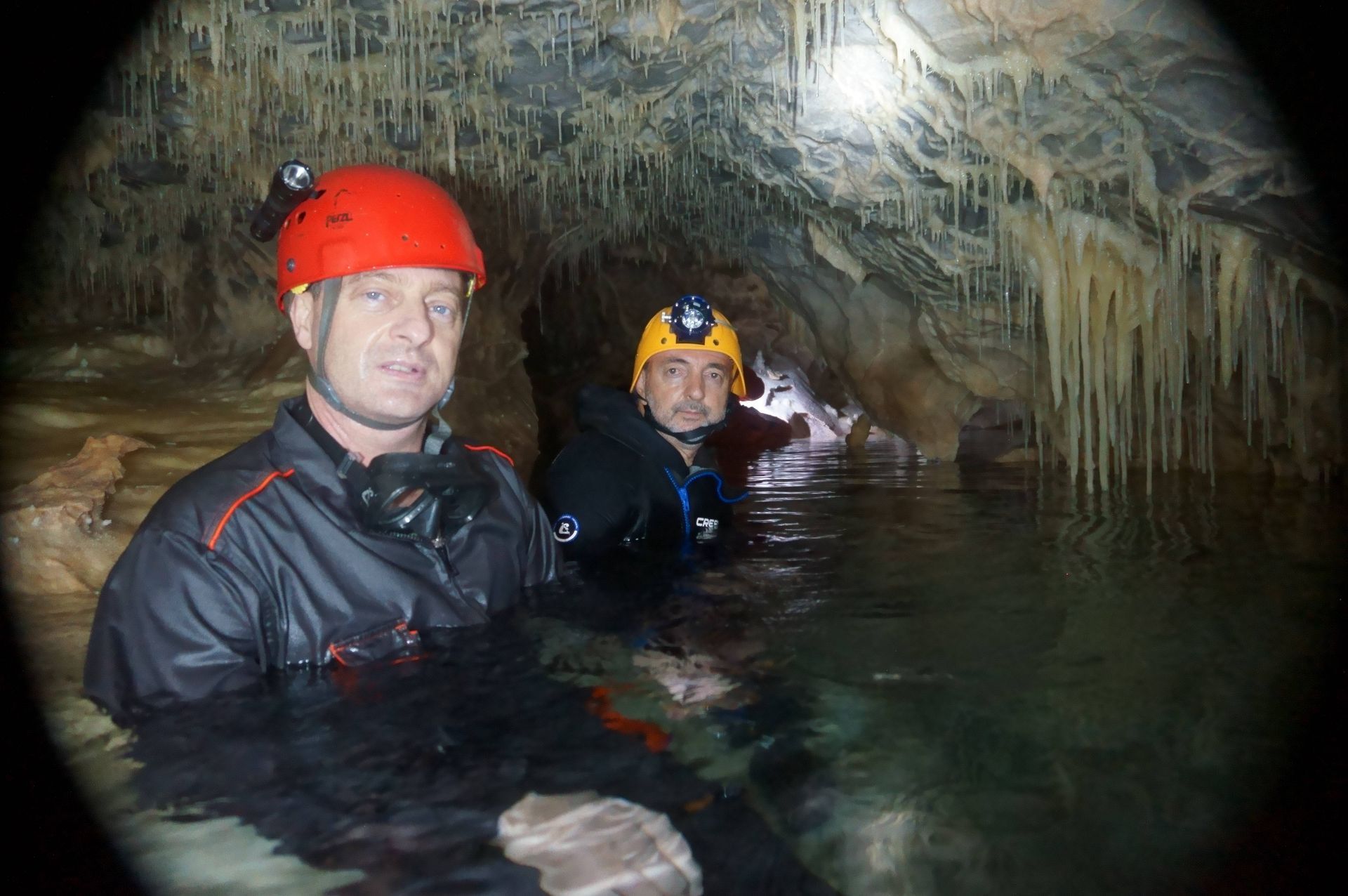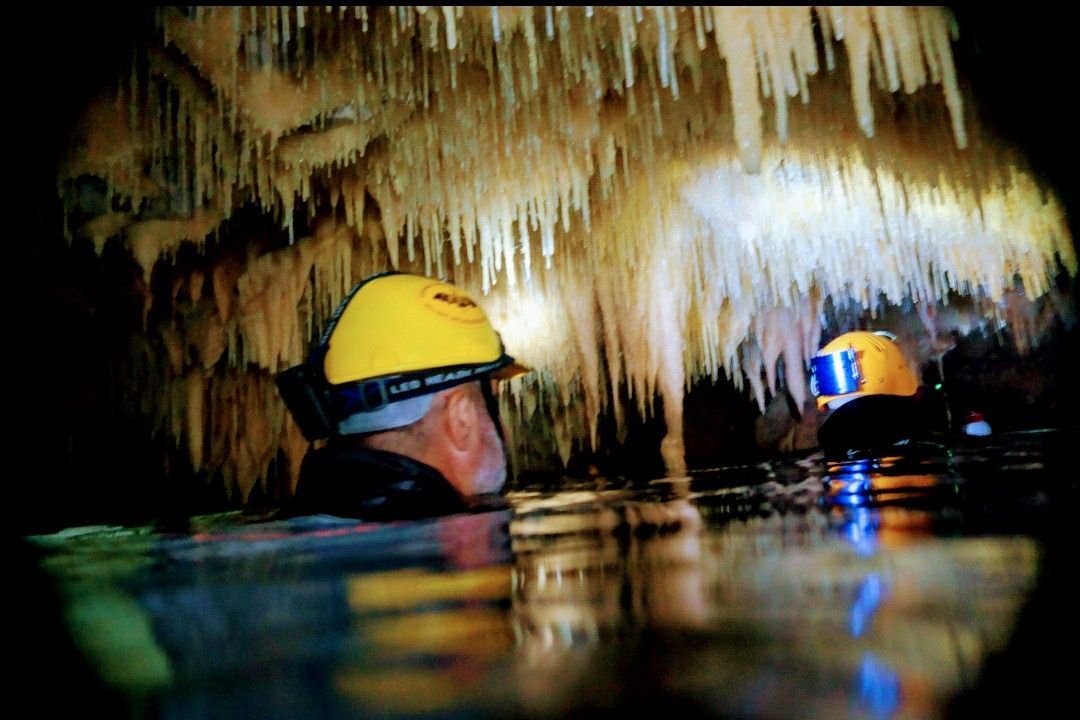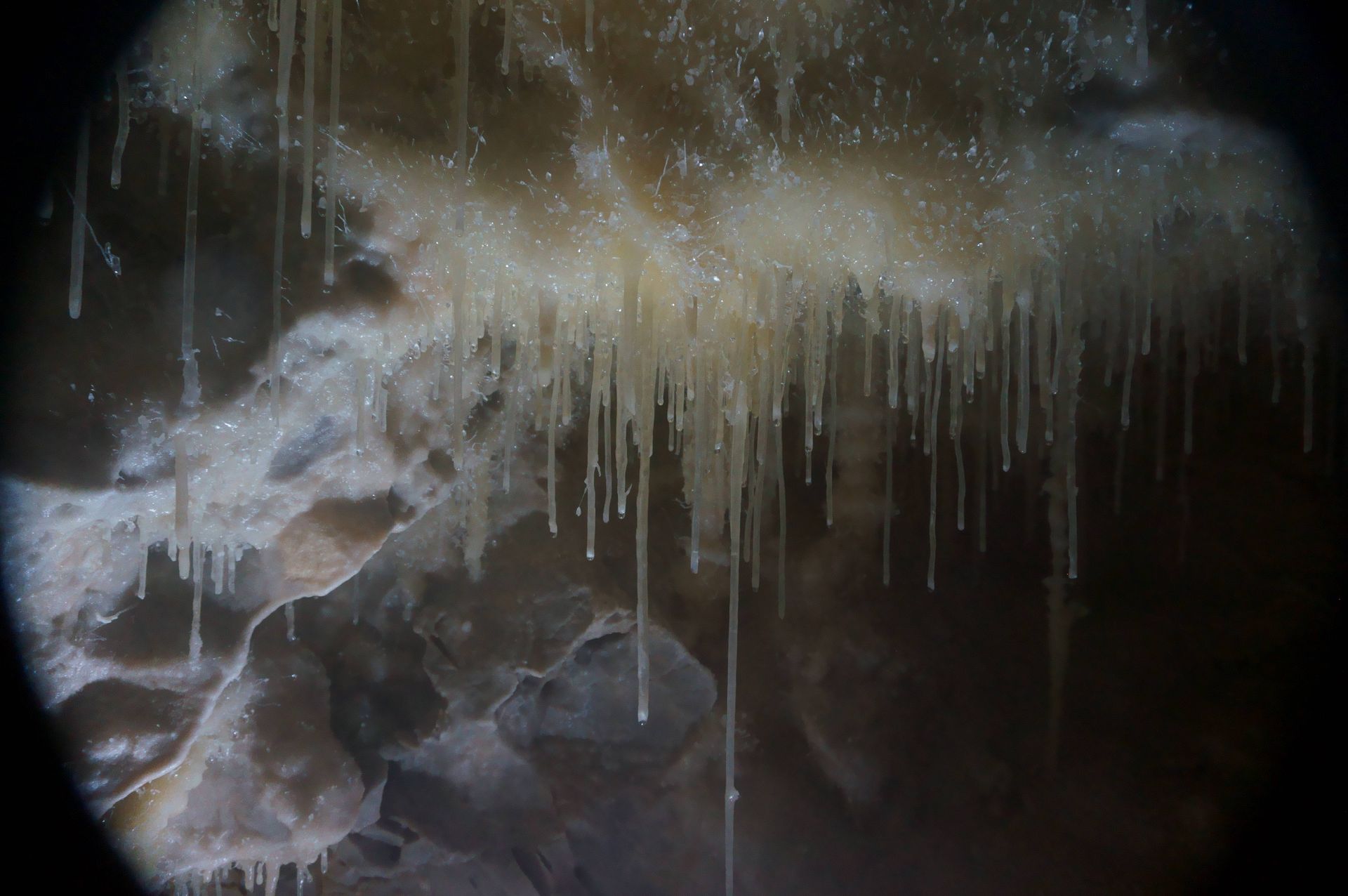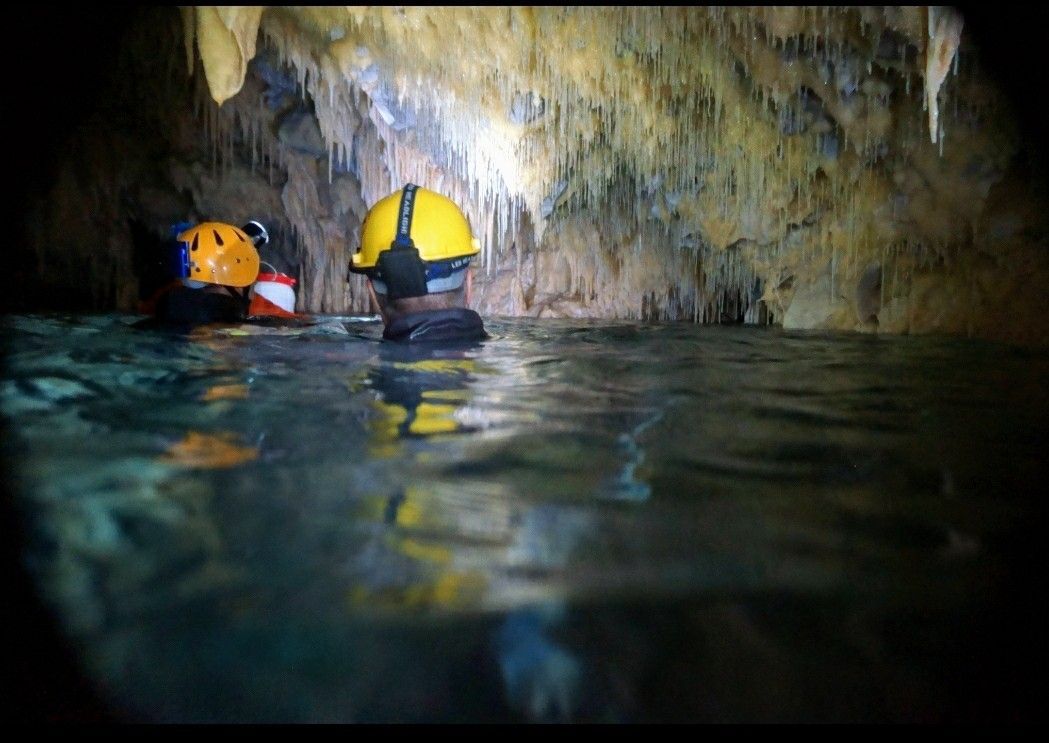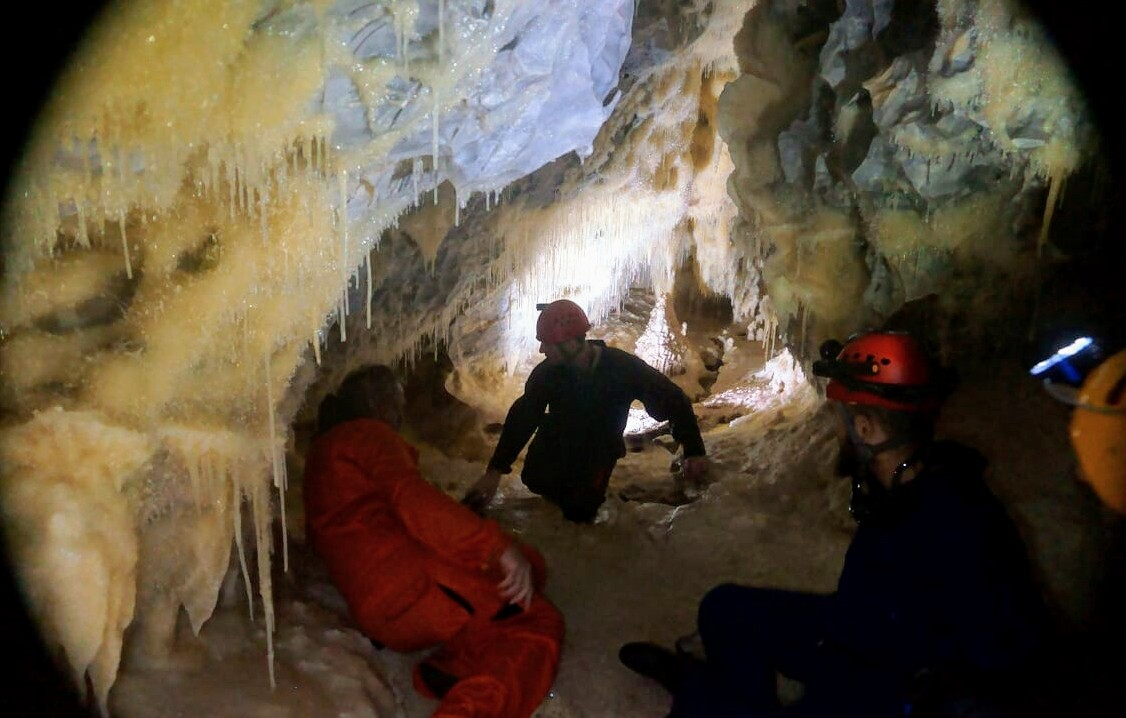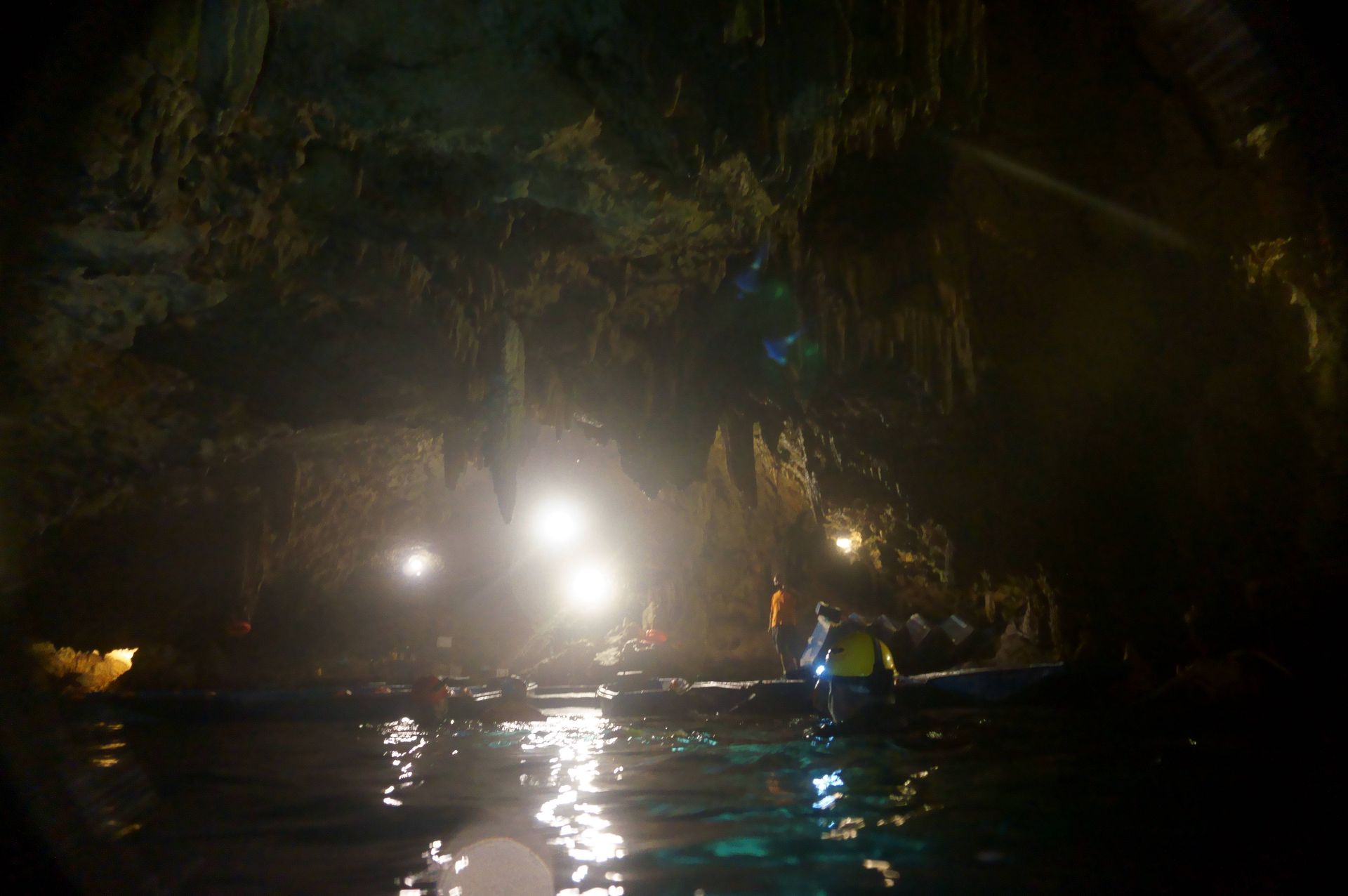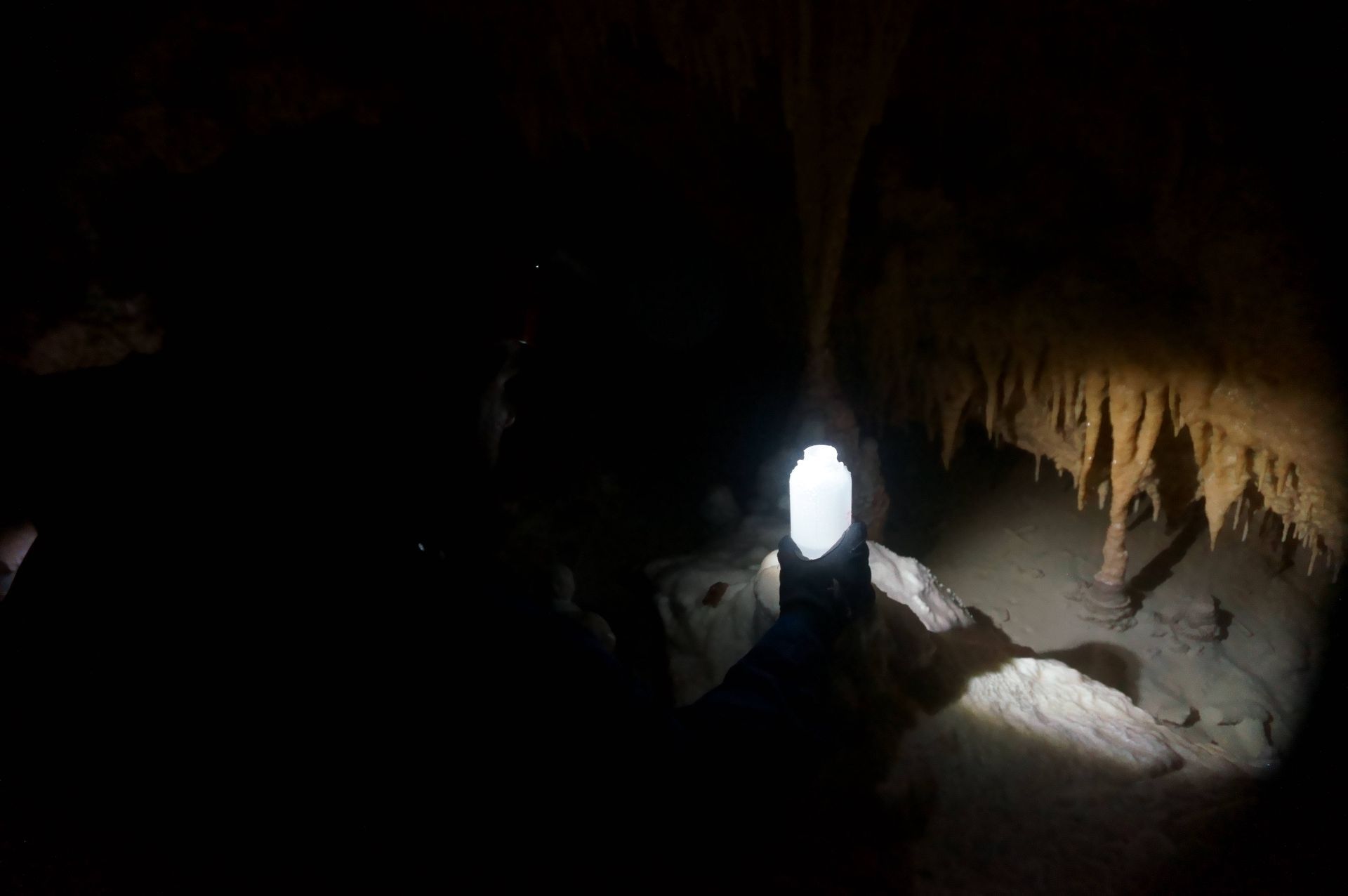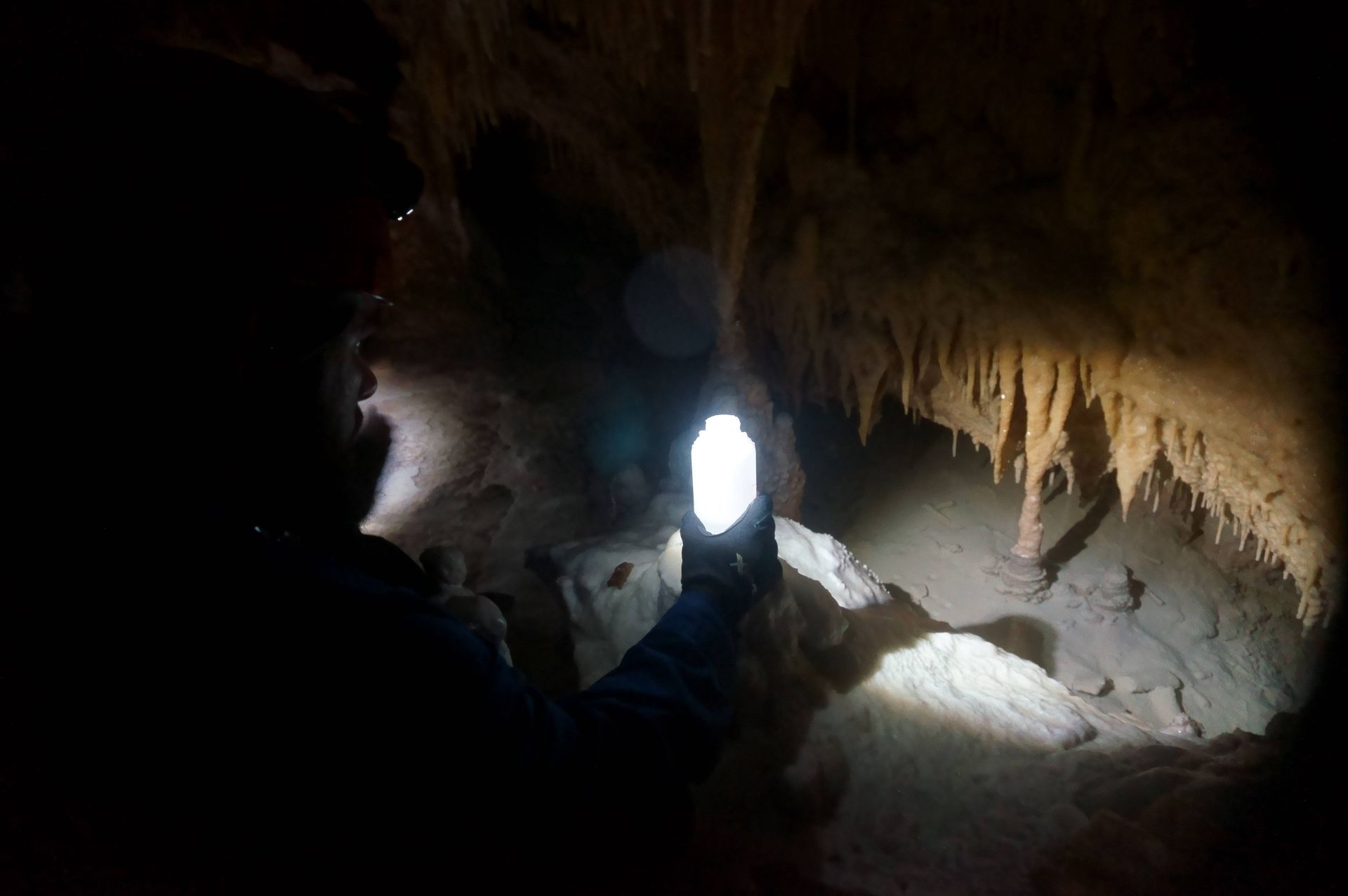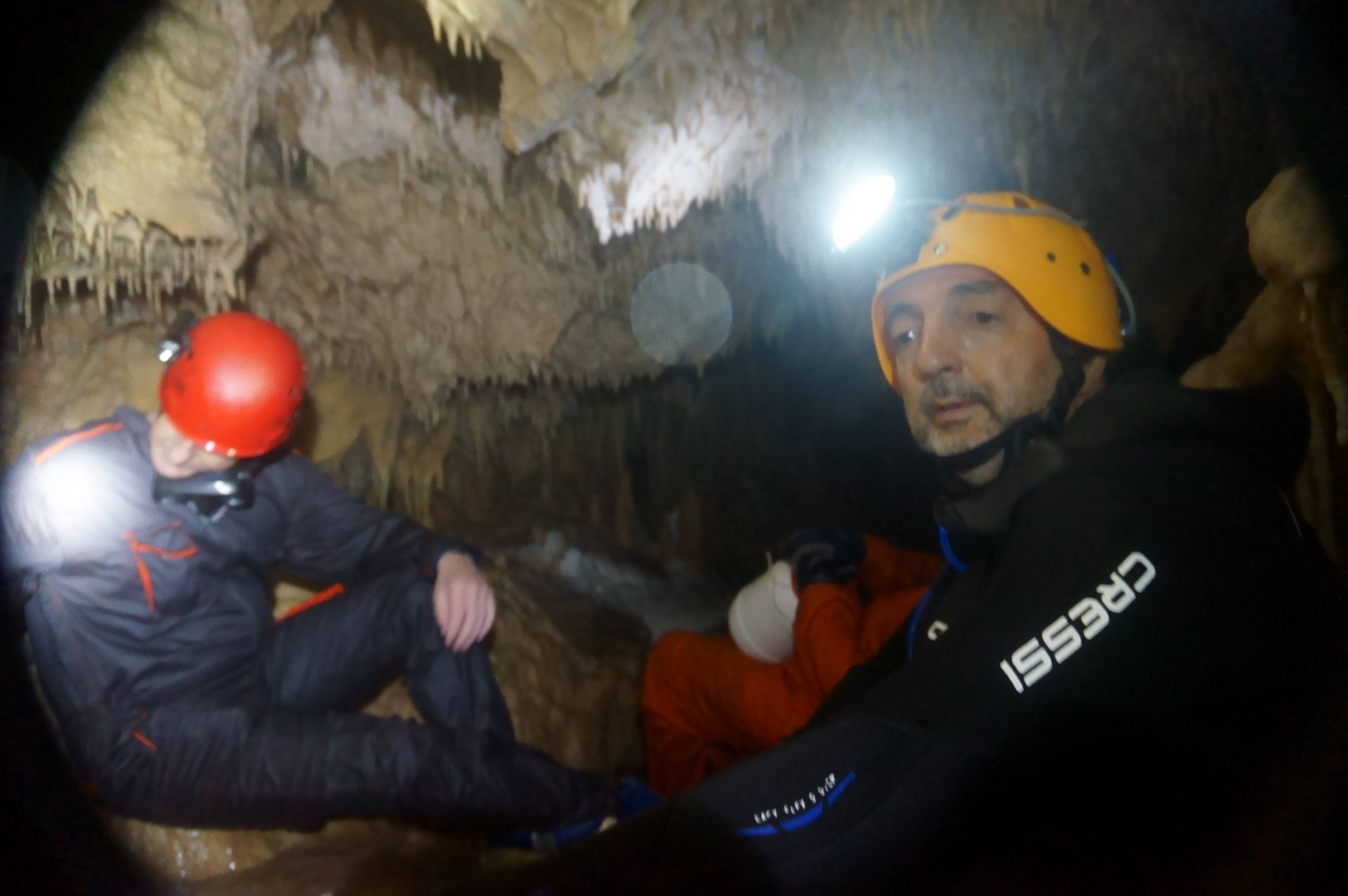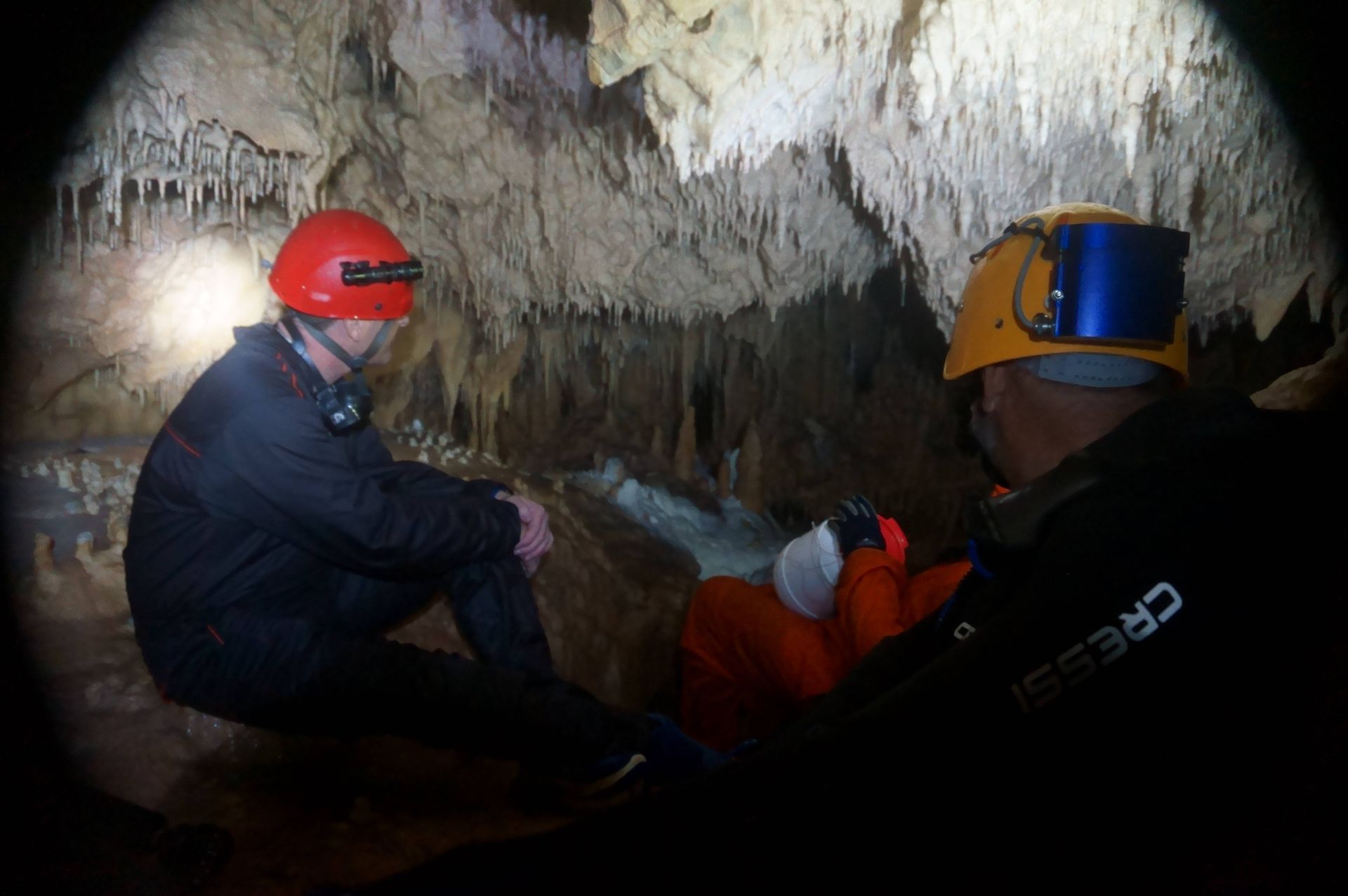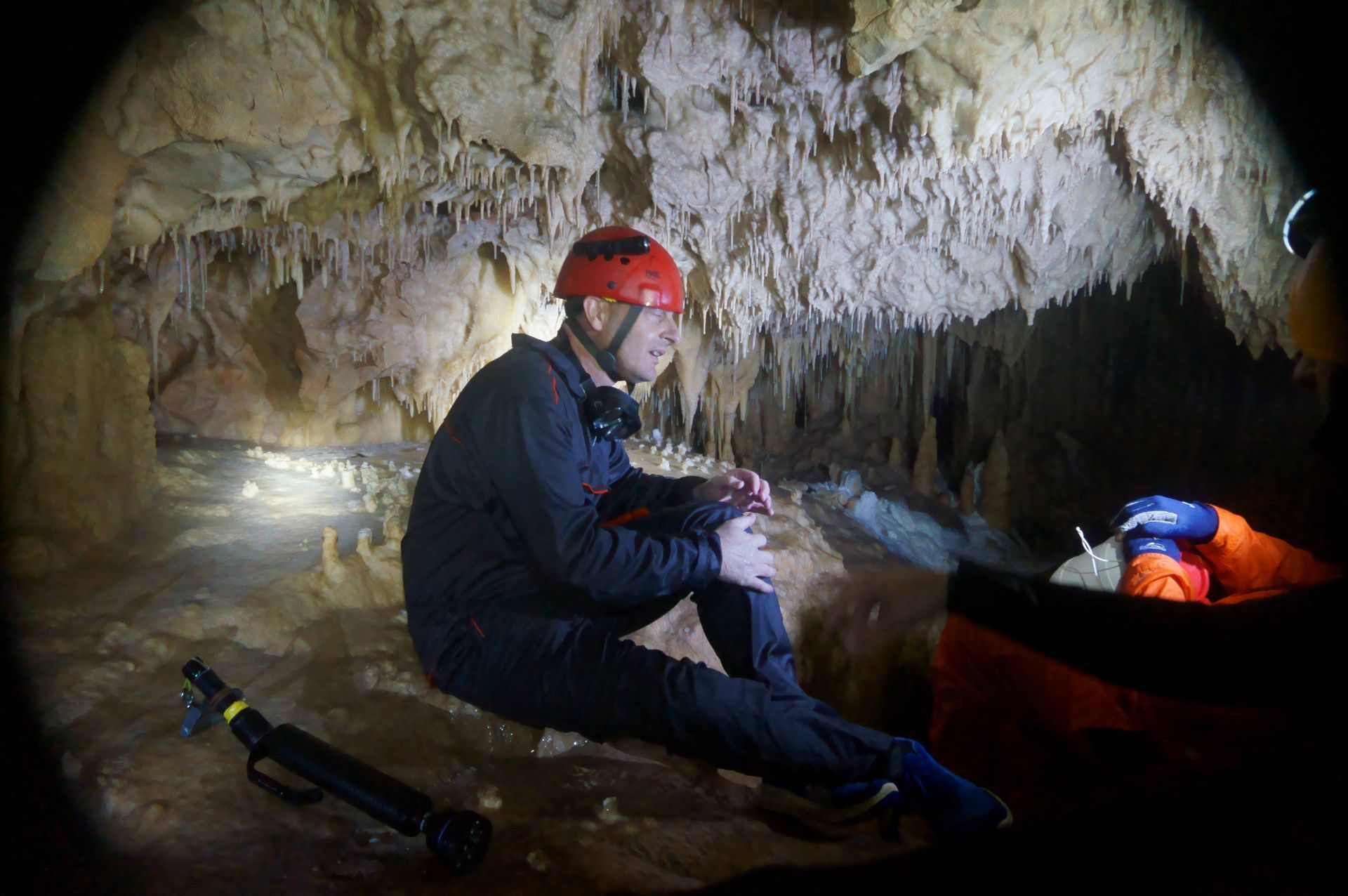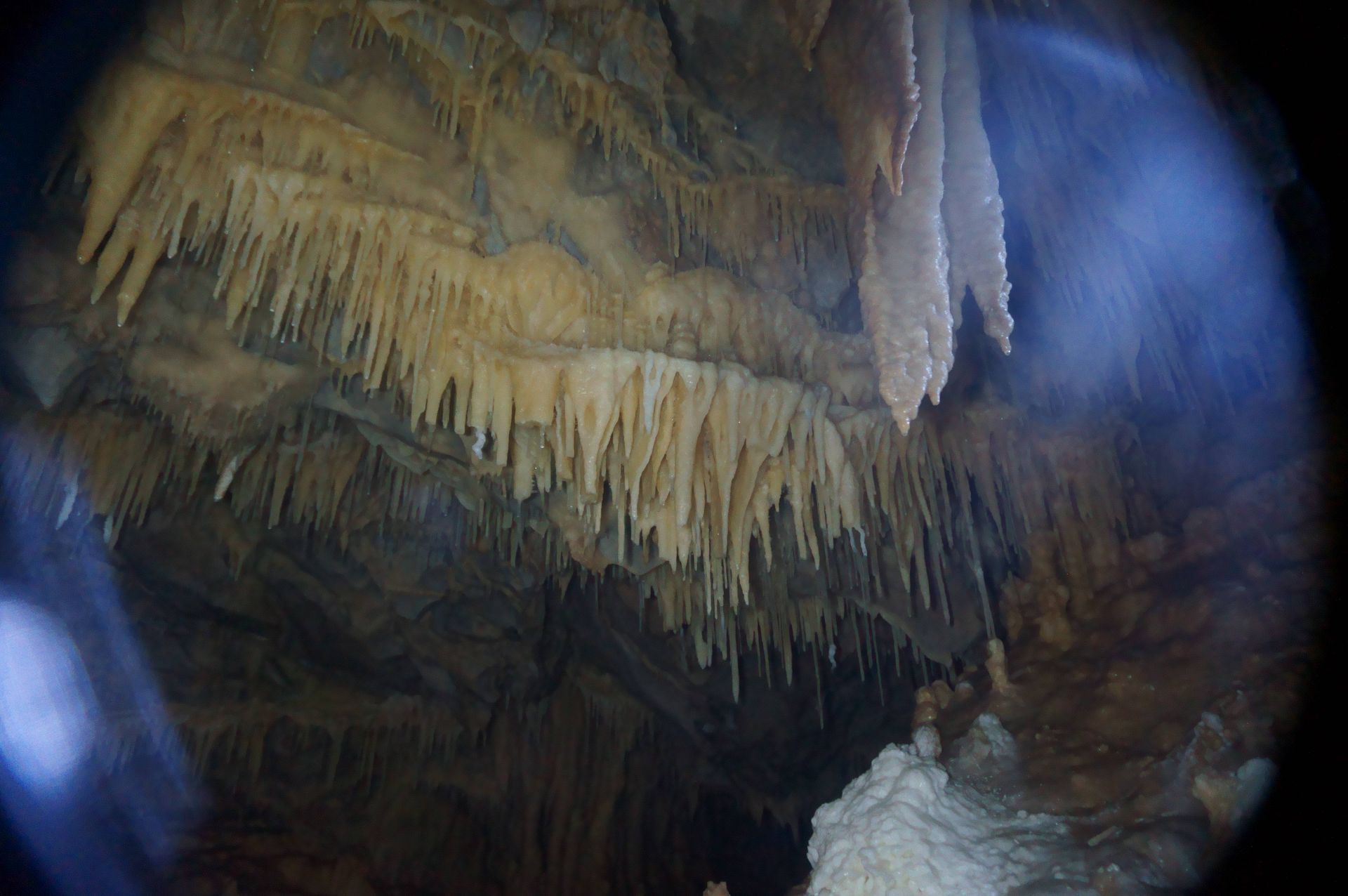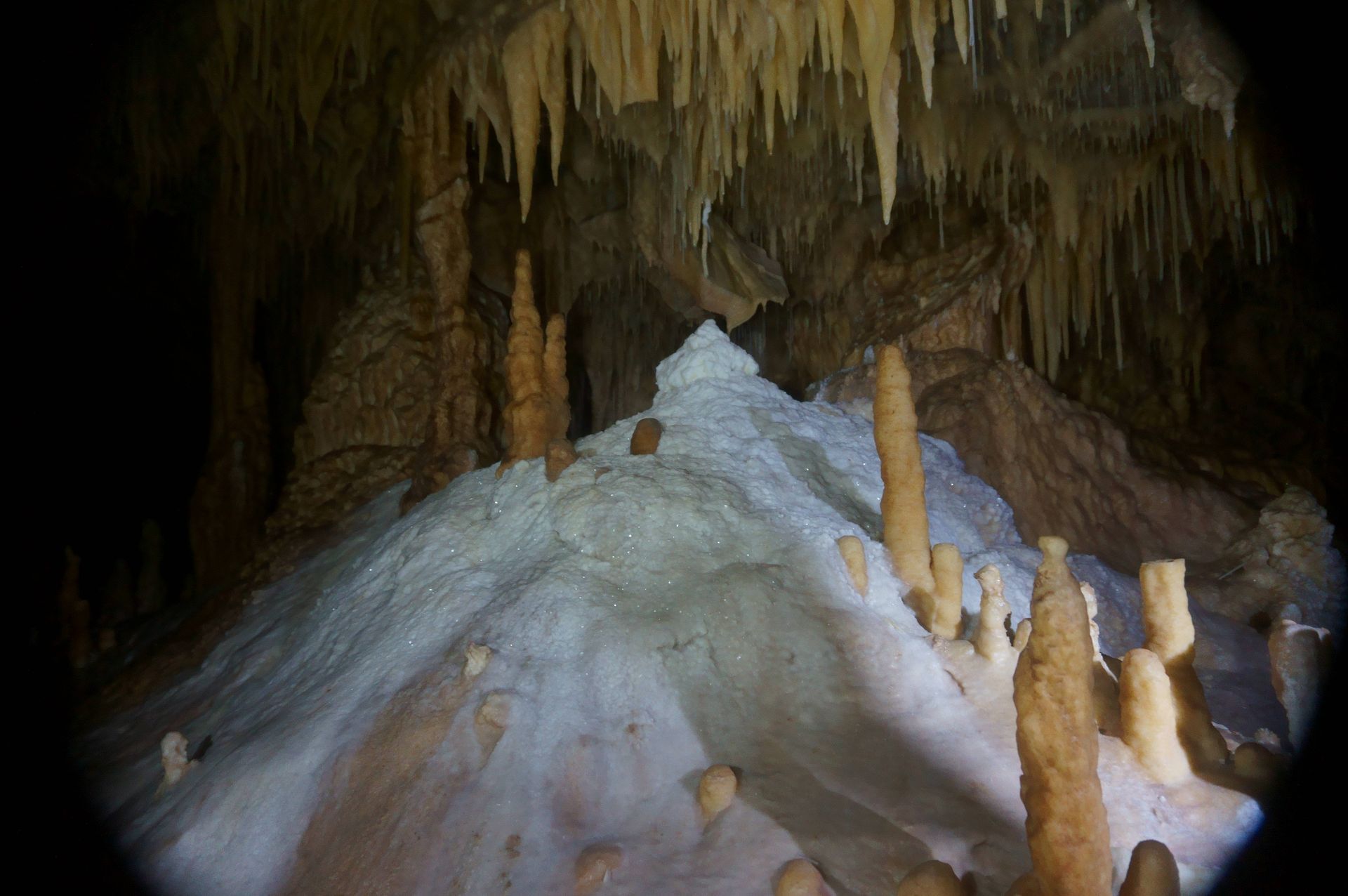Diros Cave Exploration September 2020
Exploration, research project and photography in Diros, Areopolis.
September 5, 2020
Columnist: George Petrou
Photos: Stelios Vasilakos
Vasilis Giannopoulos, needs no introduction, known for his exploration and cave diving work, his seriousness and his ethics. We had the opportunity to dive together in the "underwater" Diros and beyond.
This time it was a land excursion to one of the unknown parts of the Diros cave diving system on a long, almost untrodden route which presented to our eyes an eerily beautiful environment of stalactites, stalagmites, ponds, entrances to other routes and everything required to call it a mysterious wonder. The aim was to study and photograph the cave in combination with the research project of the University whose members aimed to collect drops of water at points which contribute to the formation of Stalactites.
With me is my friend and Harbormaster of Gytheio, Motsakos Thodoros, who is from the area and has never had the opportunity to be "down under" his place and experience the majesty of nature.
There are two caves in the area, Vlychada and Alepotrypa. The existence of the Vlychada cave was known to the locals since around 1900. However, no one suspected the miracle that hid inside it until 1949, when the founders of the Hellenic Speleological Society, Yannis and Anna Petrocheilou, began to explore it systematically.
By 1960, 1,600 meters had been explored and mapped. Since 1987, the Ephorate of Paleoanthropology - Speleology of the Ministry of Culture began a detailed study of the Cave and, in collaboration with an international team of cave divers, continued its exploration and mapping. To date, 14,700 meters of routes have been mapped. The largest part of the Cave is below the surface of the water.
The cave began to form hundreds of thousands of years ago. The stalactites and stalagmites that are now underwater were formed when the sea level was much lower than its current level. Stalactites have been found at a depth of 71 meters. The maximum depth of the cave has been located outside the tourist route and reaches 80 meters.
Το νερό που εισχωρεί στις ρωγμές του ασβεστολιθικού πετρώματος και το διαλύει, δημιουργεί κυριολεκτικά σταγόνα σταγόνα, τον διάκοσμο του σπηλαίου. Το ίζημα του διαλυμένου ανθρακικού ασβεστίου σχηματίζει με πολύ αργούς ρυθμούς σταλακτίτες και σταλαγμίτες.
The natural entrance to the cave is only half a meter in diameter and is located very close to the sea surface. In earlier times, the cave had other entrances which gradually closed.
Inside the cave, fossilized bones of a panther, hyena, lion, deer, ferret and the largest deposit of hippopotamus bones in Europe have been found. Near its natural entrance, ceramics indicating human presence have been found.
The water inside the cave is brackish and very hard. Its temperature is approximately 14°C, while the air temperature ranges from 16 to 19°C.
The tourist route has a total length of 1,500 meters, of which the first 1,200 are lakeside and the tour lasts approximately 25 minutes.
The cave's doors were first opened to visitors in 1967, when the Greek National Tourism Organization completed the restoration work that had begun six years earlier.
Important anthropological finds from the Neolithic era were discovered in the adjacent Alepotrypa cave. Many of these are exhibited in the museum located next to the entrance to this cave.
Η ομάδα αποτελούμενη από τον Βασίλη Γιαννόπουλο και Υιό, τους πανεπιστημιακούς, εμένα, τον Θόδωρο Μοτσάκο και τον φωτογράφο μας Στέλιο Βασιλάκο με στολές κατάδυσης κολύμπησε μέσα στο λιμναίο κομμάτι του Διρού φθάνοντας στο άνοιγμα που οδηγούσε στην μακρινή διαδρομή του σπηλαίου. Και επειδή εδώ ταιριάζει απόλυτα το Μία φωτογραφία ίσον Χίλιες λέξεις αντί να περιγράφω προτείνω να κοιτάξετε παρακάτω τις εικόνες. Εικόνες που είναι πολύ φτωχές για να περιγράψουν τέτοια πανδαισία κάλλους. Ένας αρχαίος, αρχέγονος κόσμος κόσμος απείραχτος και μοναδικός. Όλα αυτά μου θυμίζουν ότι η παρουσία του ανθρώπου μόνο ευεργετική δεν υπήρξε για τον πλανήτη. Ελάχιστοι από το ανθρώπινο είδος αγάπησαν , προστάτευσαν και εναρμονίστηκαν στην φύση.
Η διαδρομή αν και πολλές ώρες περπάτημα, σε πολλά σημεία χρειάστηκε να συρθούμε, να πάμε και να γυρίσουμε ήταν σαν ένα μαγικό ανοιγόκλεισμα βλεφάρων. Τόσο συναρπαστικά όλα. Δεν υπάρχει ανθρώπινη σκηνοθεσία με όποιο ψηφιακό μέσο να δημιουργήσει ένα τέτοιο θέαμα σχημάτων, χρωμάτων....τι άλλο να πω. Μια μοναδική εμπειρία που θα μας ακολουθήσει σε όλη μας την ζωή.
Ευχαριστούμε τον Βασίλη Γιαννόπουλο για την εμπειρία και τον Στέλιο Βασιλάκο για τις υπέροχες φωτογραφίες.



